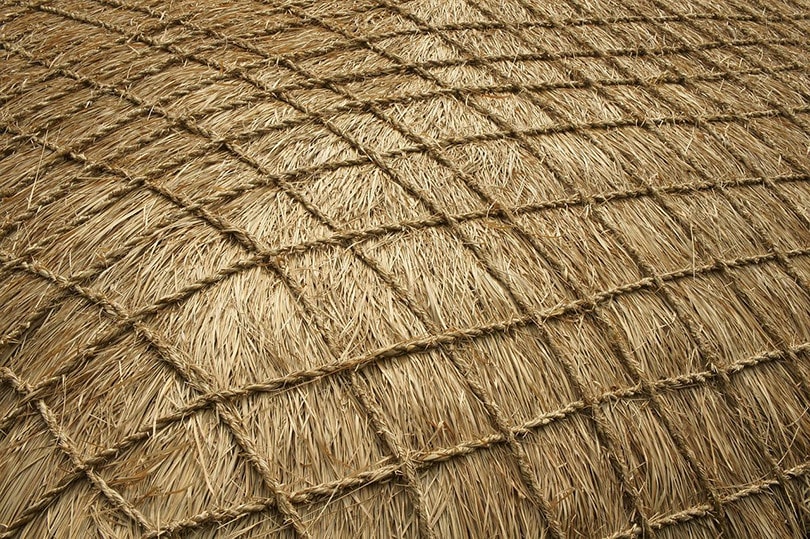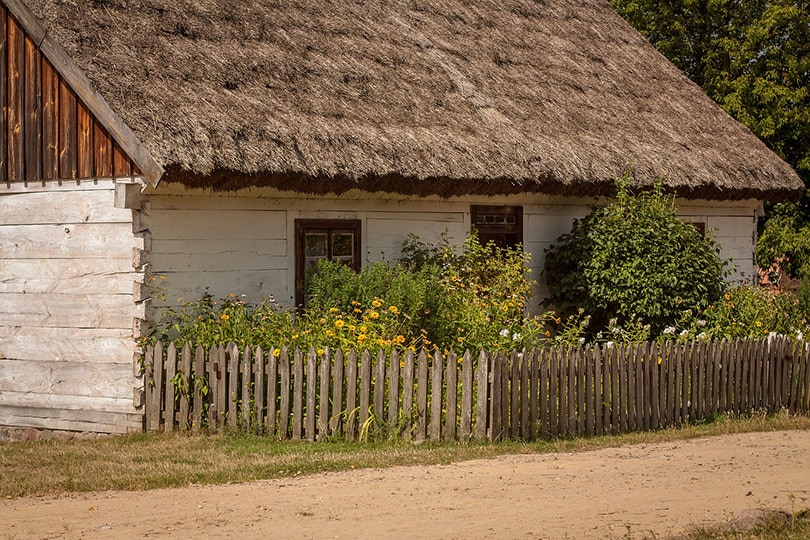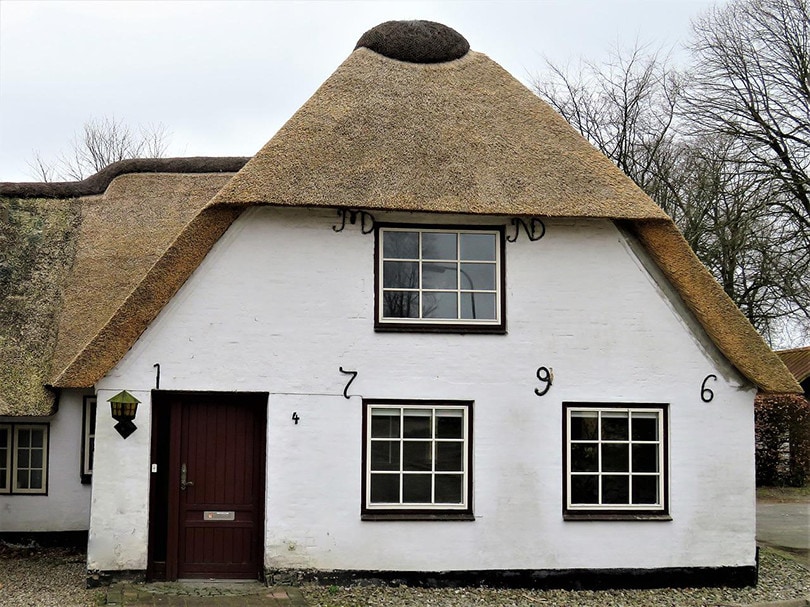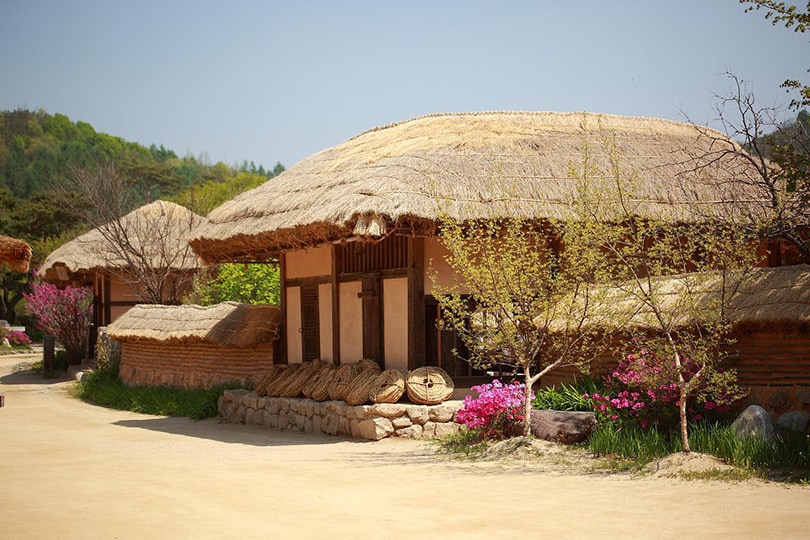How Long Does a Thatched Roof Last? Materials, Factors & FAQs
-
Pete Ortiz
- Last updated:

Thatched roofs are high-value home additions, providing an attractive cover and reliable protection. They can last up to 60 years, withstanding wind, water, and weather as well as many modern roofing materials.
Several factors can impact a thatched roof’s lifespan, including the material quality and the home’s location. Thatched roofs can last several decades. We’ll break down the variables that determine its durability so you can better estimate how long your thatched roof will last.
How Long Does a Thatched Roof Last?
Perhaps the only thing holding back thatch from wider adoption is the high cost of installing it and the perceived fire risk. Thatch is an eco-friendly and extremely practical roofing option. Its light but dense layers offer exceptional natural insulation, resist rain and high wind, and last several decades.
The thatching material will have one of the most significant impacts on a thatched roof’s lifespan. Thatchers have used a wide variety of dried vegetation to construct roofs, opting for what is available in their region. Materials around the world have included rye, heather, bamboo, palm leaves, willow, and even seaweed. The most common thatching materials in the UK, Europe, and North America are water reed, long straw, and combed wheat reed.

What Is the Longest-Lasting Material?
Water reed, or Norfolk reed, is generally the longest-lasting material for thatched roofs. It can last at least 25 years but is capable of surviving over 40 years with proper care. Its primary advantages are its natural insulating qualities and water-repellency. The dense overlapping cells create a waterproof surface that allows it to shed water. Moisture only penetrates the first 1 or 2 inches of thatch, leaving the thick layering underneath unscathed.
Combed wheat reed can last up to 40 years, while long straw lasts the shortest time at roughly 15–30 years. The two types of thatch come from the same kind of wheat straw but combing and straightening give it a smoother look.
Other Factors
Along with their material choice, the thatcher’s skill will play an essential part in determining the roof’s longevity. Thatch can suffer damage for several reasons, particularly moisture penetration and pests. As a natural material, it’s also susceptible to catching fire. A quality build with dense thatch layers can prevent most of those issues.
A properly thatched roof will be tightly packed to prevent pests from burrowing in and water from breaching the first few inches. Thatch needs a steep pitch of at least 45° to ensure water and snow rush off. A shallow incline, loose packing, or inadequate mesh binding will cause pests to pick it apart and water to sit, create mold, and degrade the roof. A poor installation will also make it easier for a house fire to spread, as dense thatch will slowly smolder and cause less damage.
With moisture being a critical factor in a thatched roof’s lifespan, geography is also consequential. Thatched roofs in dry areas may need less maintenance and regular replacement than those in coastal or rainy, humid regions.

Centuries-Old Thatched Roofs
Thatched roofs have numerous layers of thatch. Although we say they’ll last up to 60 years, the truth is that the bottom layers can survive hundreds of years.
After thatchers install the first 12–18 inches of thatch to the wooden framework, they lock it down with metal rods. Another several inches of thatch goes on top. After several years the top layer degrades, exposing the metal rods and indicating to the homeowner that it’s time for a replacement.
Although some thatchers may replace the whole roof, the traditional route is to add layers. The underlying thatch remains intact, and the layers sometimes build up to become over 5-feet thick. In some of England’s oldest homes, the bottom thatch layers are hundreds of years old.
How Long Does a Thatched Roof Ridge Last?
The ornate ridge is the most distinct and shortest-lived thatched roof component. It generally needs replacement every 10–15 years because it endures the harshest weather.
A thatched roof ridge is made of long straw (winter wheat) held in place with sparring, giving it a stitched appearance. Thatchers use various block (raised) and flush designs to seal out the elements along the top of the roof. They often employ signature patterns, making their work easy to identify. Since thatch consists of desirable nesting material for birds, thatchers cover it in wire mesh to prevent them from picking at the straw.

How Do You Maintain a Thatched Roof?
Moisture and open holes that invite pests are primary threats to thatched roofs. Regular inspections will allow thatchers to find minor cavities and damage to repair. It’s also critical to look for signs of degradation in the mesh and wire rods. If the mesh cover looks bubbled in certain areas, or if the metal rods or spars are sticking out, it’s a sign that you need a repair.
Clearing away trees from thatched roofs is a critical moisture-control measure. Removing them offers more sunlight exposure. Roofs will dry faster, reducing the presence of mold, bacteria, moss, and lichen. You can also rake a thatched roof regularly and apply an algaecide to limit growth and preserve the top layers.
- You might also like: What Causes an Automatic Transmission to Fail? 5 Possibilities
Conclusion
Thatched roofs can survive as long as many roofing materials like slate and asphalt, and the aesthetics are impossible to beat. Thanks to modern fire-proof barriers and protective coatings, even their few drawbacks are becoming benefits.
What was once a lower-class roofing material used out of sheer necessity has transformed into a modern display of affluence and prestige. Though less common in America, this centuries-old tradition is enjoying a resurgence in new markets. It may not be long before we see more thatched roofs adorning abodes in neighborhoods across the country.
Featured Image Credi: jeonsango, Pixabay
Contents



